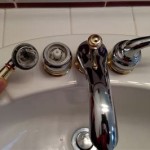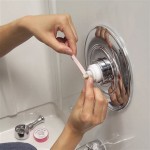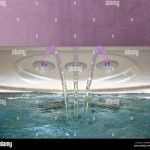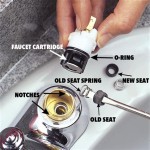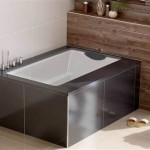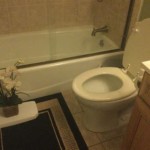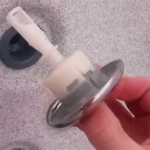The Enduring Appeal of Galvanized Metal Bathtubs
Galvanized metal bathtubs represent a compelling intersection of historical charm, durability, and contemporary design. These tubs, once ubiquitous in rural settings and now experiencing a resurgence in popularity, offer a unique bathing experience that differentiates them from their acrylic, cast iron, or copper counterparts. A thorough understanding of their construction, advantages, disadvantages, maintenance, and diverse design options is crucial for anyone considering incorporating a galvanized metal bathtub into their bathroom.
The galvanization process is fundamental to the longevity and resilience of these bathtubs. It involves coating steel or iron with a layer of zinc, which serves as a sacrificial anode. This means that if the coating is scratched or damaged, the zinc will corrode before the underlying steel, preventing rust formation. The thickness of the zinc coating directly correlates with the lifespan of the tub; thicker coatings offer superior protection. There are several methods of galvanization, including hot-dip galvanizing, electrogalvanizing, and sherardizing, each with its own advantages and resulting coating characteristics.
Hot-dip galvanizing is the most common method for bathtubs due to its ability to create a robust and durable coating. The steel tub is immersed in a bath of molten zinc, resulting in a thick, uniform layer that bonds metallurgically with the steel. This process provides excellent corrosion resistance and is suitable for both interior and exterior applications.
Electrogalvanizing, while offering a smoother and more cosmetically appealing finish, generally provides a thinner zinc coating and less corrosion protection than hot-dip galvanizing. It is often used for applications where aesthetics are paramount, but may not be the ideal choice for bathtubs exposed to frequent water contact and potential abrasion.
Sherardizing, also known as vapor galvanizing, involves heating steel components in a closed container with zinc dust. This process creates a uniform zinc coating that penetrates the steel surface, resulting in excellent adhesion and corrosion resistance. While less common for bathtubs than hot-dip galvanizing, sherardizing can offer superior protection in demanding environments.
Advantages of Galvanized Metal Bathtubs
Galvanized metal bathtubs offer several distinct advantages that contribute to their growing popularity.
Durability and Longevity: The primary advantage of a galvanized metal bathtub is its exceptional durability. The zinc coating protects the underlying steel from corrosion, extending the lifespan of the tub significantly. Properly maintained galvanized bathtubs can last for decades, making them a worthwhile investment.
Unique Aesthetic: Galvanized metal bathtubs possess a rustic, industrial aesthetic that is highly sought after by homeowners and designers. Their distinctive appearance adds character and charm to any bathroom, creating a focal point that is both visually appealing and functional. The cool, metallic tone complements a variety of design styles, from farmhouse to modern industrial.
Heat Retention: While not as efficient as cast iron, galvanized metal offers decent heat retention compared to acrylic tubs. The metal absorbs and retains heat, allowing for a longer and more comfortable bathing experience. The heat retention can be further enhanced by insulating the exterior of the tub.
Sustainability: Steel is a highly recyclable material, making galvanized metal bathtubs a more environmentally friendly option compared to some other materials. At the end of their lifespan, galvanized steel can be recycled and reused, reducing waste and conserving resources.
Relatively Lightweight: Compared to cast iron bathtubs, galvanized metal tubs are significantly lighter, making them easier to install and transport. This is particularly advantageous in older homes or in situations where structural support is a concern.
Disadvantages of Galvanized Metal Bathtubs
Despite their numerous advantages, galvanized metal bathtubs also have some drawbacks that should be carefully considered.
Potential for Rusting: While the zinc coating provides excellent protection, it is not impervious to damage. Scratches or abrasions to the coating can expose the underlying steel to moisture, leading to rust formation. Regular maintenance and prompt repair of any damage are essential to prevent corrosion.
Galvanic Corrosion: Galvanic corrosion can occur when galvanized steel comes into contact with dissimilar metals in the presence of an electrolyte, such as water. This can accelerate the corrosion of the galvanized coating. It is important to avoid direct contact between galvanized metal bathtubs and other metals, such as copper or aluminum, and to use compatible plumbing fixtures.
Surface Temperature: Galvanized metal can become quite cold to the touch, especially in colder climates. This can be uncomfortable when entering the tub. Preheating the tub with warm water before bathing can help to mitigate this issue.
Maintenance: While relatively easy to clean, galvanized metal bathtubs require regular maintenance to prevent staining and corrosion. Harsh chemicals and abrasive cleaners should be avoided, as they can damage the zinc coating. A mild soap and water solution is typically sufficient for routine cleaning.
Cost: Galvanized metal bathtubs can be more expensive than acrylic tubs, particularly if custom designs or high-quality galvanization processes are used. However, the increased durability and longevity of galvanized metal can offset the higher initial cost over the long term.
Maintenance and Care of Galvanized Metal Bathtubs
Proper maintenance is essential to preserving the appearance and extending the lifespan of a galvanized metal bathtub.
Regular Cleaning: Clean the tub regularly with a mild soap and water solution. Avoid using harsh chemicals, abrasive cleaners, or scouring pads, as these can damage the zinc coating and lead to rust formation. A soft cloth or sponge is recommended for cleaning.
Prompt Repair of Damage: Inspect the tub regularly for scratches, chips, or other damage to the zinc coating. Promptly repair any damage to prevent rust formation. Small scratches can be touched up with a zinc-rich paint or sealant. For larger areas of damage, it may be necessary to re-galvanize the affected area.
Avoid Harsh Chemicals: Avoid using harsh chemicals, such as bleach or ammonia-based cleaners, as these can corrode the zinc coating. Similarly, avoid exposing the tub to prolonged contact with acidic substances, such as vinegar or lemon juice.
Proper Drainage: Ensure that the tub drains properly after each use to prevent standing water from accumulating on the surface. Standing water can accelerate corrosion and staining. Clean the drain regularly to prevent clogs.
Protect from Physical Damage: Avoid dropping heavy objects into the tub or subjecting it to excessive physical stress. This can dent or scratch the metal, compromising the zinc coating and increasing the risk of corrosion.
Consider Waxing: Applying a coat of wax specifically designed for metal surfaces can provide an additional layer of protection against moisture and staining. This is particularly beneficial in areas with hard water or high humidity.
Neutralize Salts: If the bathtub is near coastal areas, salt spray can accumulate on the surface and accelerate corrosion. Regularly rinse the tub with fresh water to remove salt deposits.
The aesthetic appeal of galvanized metal bathtubs lends itself to a variety of bathroom design styles. From rustic farmhouse to modern industrial, these tubs can be seamlessly integrated into diverse settings. The unique metallic finish can be paired with natural materials, such as wood and stone, to create a warm and inviting space. Alternatively, it can be juxtaposed with sleek, minimalist fixtures for a more contemporary look.
Freestanding galvanized metal bathtubs are particularly popular, as they can serve as a striking focal point in the bathroom. These tubs are available in a range of shapes and sizes, from traditional clawfoot designs to more contemporary oval or rectangular shapes. The exterior of the tub can be left in its natural galvanized finish or painted to match the surrounding decor.
Drop-in galvanized metal bathtubs are also available, allowing for a more integrated look. These tubs are typically installed within a tiled surround, creating a seamless transition between the tub and the surrounding surfaces. Drop-in tubs can be customized with various features, such as jets or whirlpools, to enhance the bathing experience.
Galvanized metal stock tanks are sometimes repurposed as bathtubs, offering a unique and rustic aesthetic. These tanks are typically larger and deeper than traditional bathtubs, providing a spacious and immersive bathing experience. However, it is important to ensure that the tank is properly sealed and treated to prevent corrosion before being used as a bathtub. Safety should always be considered when modifying a stock tank for bathing.
The faucet choice is of paramount concern when completing a galvanized metal bathtub installation. Choose faucets in finishes and materials that complement the galvanized metal. Matte black faucets offer a striking contrast and enhance the industrial aesthetic, while brushed nickel or stainless steel faucets provide a more understated and contemporary look. Copper or brass faucets can add a touch of warmth and rustic charm.
The careful matching of the galvanized metal bathtub with appropriate hardware, fixtures, and spatial design, can ensure that a galvanized metal bathtub is a lasting investment.

Just Right Bus Living With A Water Trough Bathtub

Galvanised Tin Bathtub Peppermill Interiors

Galvanized Metal Bathtub

Galvanized Metal Bathtub Waskavillage

Large Zinc Bathtub Galvanized Tub Cowboy Photography Prop

Rustic Tin Bath

5018l Gv Lavande Galvanized Tub Decor Cheungs

Oval Bath Tub Galvanized Dixie Grace Candle Company

7 Metal Tubs That Steal The Show

10 Amazing Tin Bathtubs For The Best Farmhouse Decor Home Ideas Trough Bathtub Horse
Related Posts

